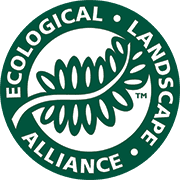Maintenance dilemmas of a modern obsession by Nick Novick A bizarre and wasteful fetish to some, a proud achievement of a caring property owner for others, our modern “boring carpet…
Lawn Care
Using Compost Tea on Turf
by Peter Schmidt Interest in making and applying Actively Aerated Compost Tea has grown tremendously in recent years, particularly in turf grass management. Many homeowners no longer wish to live…
Native Lawn Options for California
by Josh Fodor California has received a welcome reprieve from the drought with above average rain fall this winter. Although we may not be faced with stringent outdoor water use…
Shade Gardening as an Alternative to Lawns
by Judy Eisenberg Reprinted by permission of the author and of the Somerville Journal. Growing the perfect healthy lawn free of crabgrass and weeds in shady areas requires high maintenance…
Thoughts on Organic Lawn Care
By Roger Sturgis Organic lawns are the way to go. The “Scott’s” perfectly green, weed-free carpet should not be the pride of the neighborhood. However, it takes a confident neighbor…
Lawn Alternatives
by Elizabeth Gross The best way to create an alternative to the traditional lawn is to practice what my family calls the ‘Pluck & Chuck’ method. I hope you, too,…
The Basic Principles of Organic Lawns
by Frank Koll Maintaining organic lawns and gardens is based on some key principles that guide land care professionals to manage and take care of your landscape.
White Grubs in Turfgrass: Biology and Management
ELA presentation by Dr. Patricia J. Vittum, University of Massachusetts, Department of Entomology. Summary by Bruce Wenning, Horticulturist and Entomologist at The Country Club in Chestnut Hill, MA and Land’s…
Lawns – A Short Primer
Spring – Gypsum is used in areas where snow has been piled, where salt has been used and where people or vehicles may have cut corners or parked on the…
Organic Lawn Care Basics
by Bruce Wenning Take a look at this grid that shows cultural methods that promote turfgrass growth and establishment, reduce insect and disease problems, and conserve water. Click here for…
Controlling White Grubs Without Chemicals
by Bruce Wenning White grubs are insect pests of home lawns, athletic fields, parks, gardens and anywhere their preferred hosts grow. They live in soil, are C-shaped, have six legs,…

